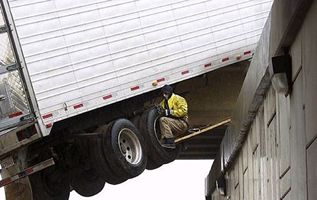
Speed - From Our Class
In this section we will cover how physical forces such as gravity, friction, kinetic energy, inertia and centrifugal force affect a drivers ability to control a vehicle. Understanding these forces and how vehicle speed and traction are influenced by them will better prepare drivers for adverse situations encountered every day such as driving on slick roads and following a safe distance behind vehicles.
Vehicle Control is Effected by Physical Forces
The effects of speed on vehicle control are often overlooked, yet they are essential to safe and efficient driving. Speed affects a vehicle’s control due to gravity, friction, kinetic energy, inertia, and centrifugal force. Understanding how each of these forces works and how they interact with one another can help drivers to better manage the speed of their vehicles.
Gravity:
The force that pulls an object towards the center of the Earth. It is the force that allows a vehicle to maintain its position on the road and helps it to remain stable during turns. However, as speed increases, gravity’s effect on the vehicle’s control also increases. At higher speeds, the downward force of gravity will cause the vehicle to drift towards the outside of the turn, making it more difficult to maintain control.
Friction:
The force that resists motion between two surfaces. It is the force that allows a vehicle to grip the road and accelerate. As speed increases, the amount of friction between the tires and the road decreases, making it harder for the vehicle to grip the road and maintain control.
Kinetic energy:
The energy of motion. As speed increases, the amount of kinetic energy increases, making it more difficult to slow down or stop the vehicle. At higher speeds, the amount of kinetic energy required to stop the vehicle increases significantly, making it harder to come to a complete stop quickly.
Inertia:
The resistance of a moving object to a change in its motion. It is the force that keeps a vehicle moving in a straight line when the steering wheel is not being turned. At higher speeds, the amount of inertia increases, making it harder for a driver to quickly turn the steering wheel and change the direction of the vehicle.
Centrifugal force:
The force that causes an object to move away from the center of a circle when it is rotating. This force is the main reason why a vehicle tends to drift towards the outside of a turn when it is going too fast. The higher the speed, the greater the centrifugal force, making it harder to maintain control.
In conclusion, speed has a significant effect on a vehicle’s control due to gravity, friction, kinetic energy, inertia, and centrifugal force. Understanding how each of these forces works and how they interact with one another can help drivers to better manage the speed of their vehicles and maintain control.















